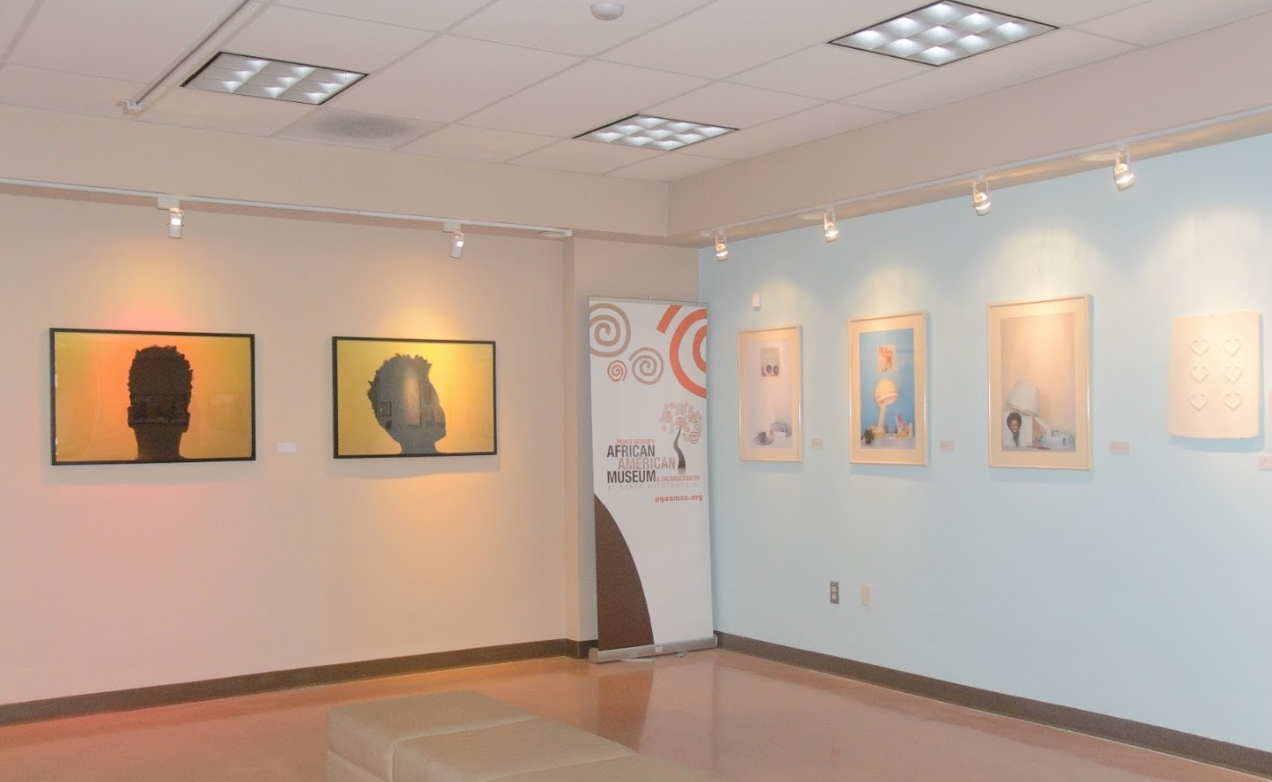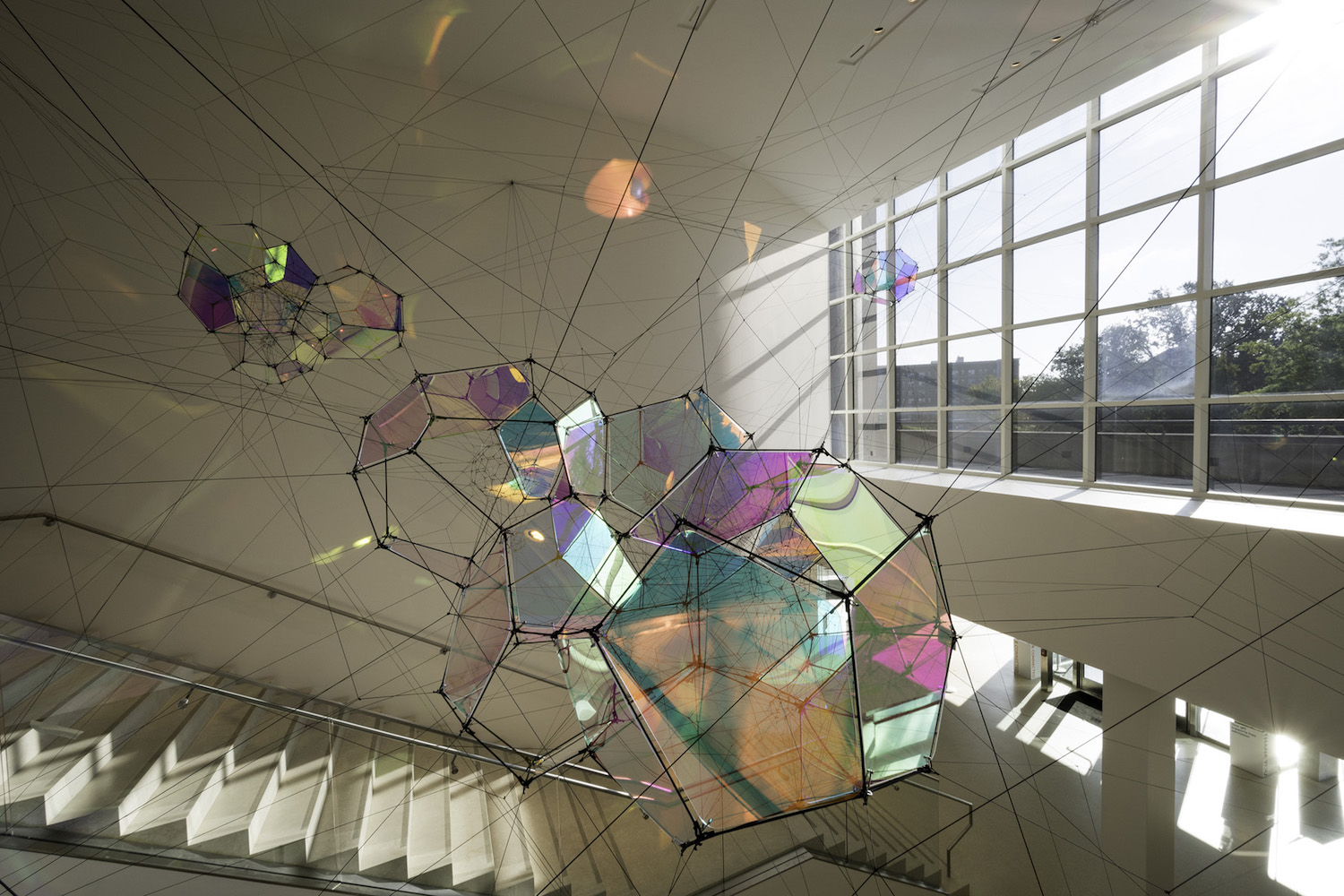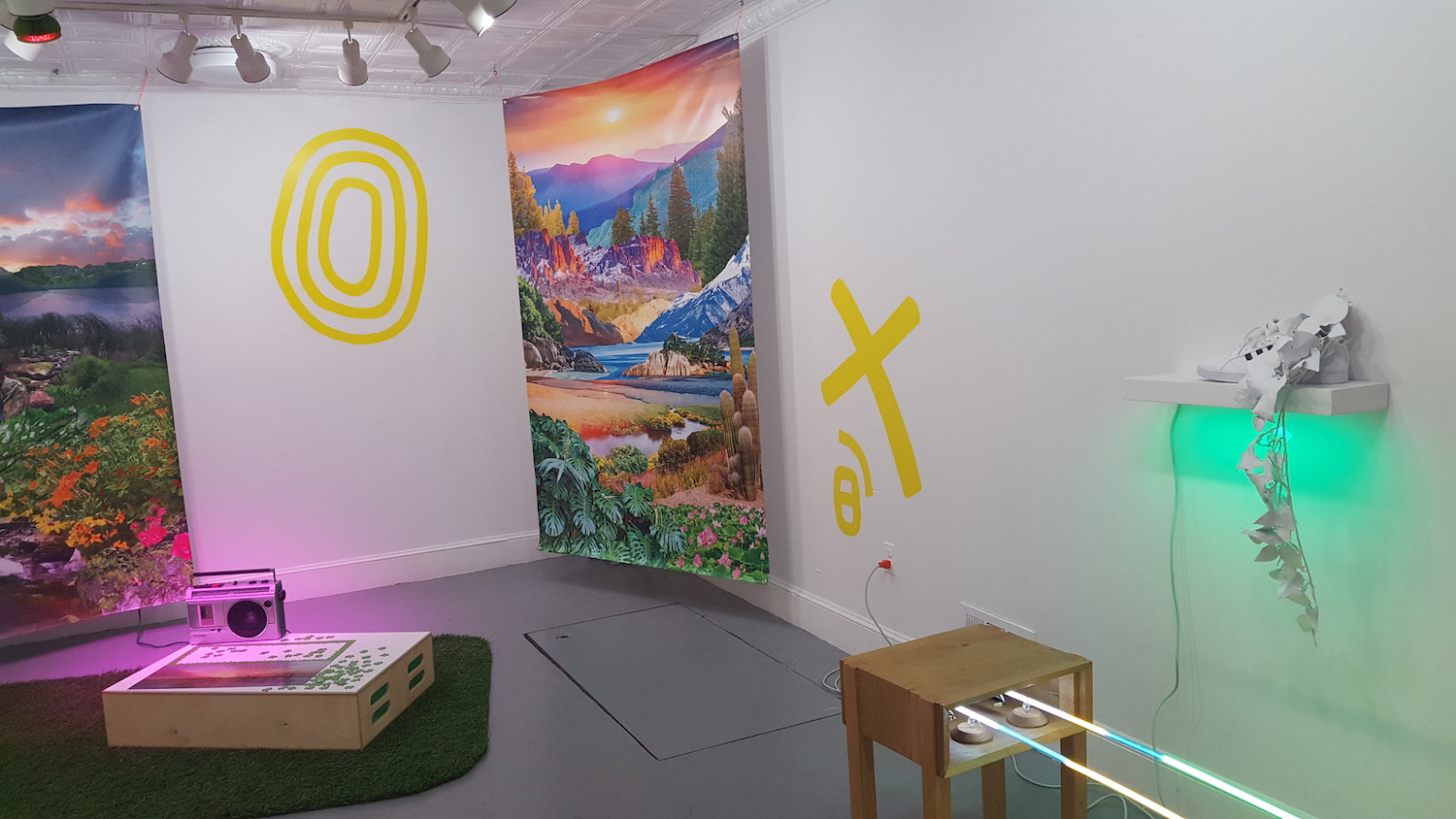Blame It On the Rain, featuring Richmond artists Amy Chan, Sarah Mizer, and collaborative team Valerie Molnar & Matt Spahr at Open Space reviewed by Rowan Fulton
An unfinished puzzle, a false, idyllic landscape, a certain ubiquitous sneaker out of context–Blame It On the Rain, a group exhibition at Open Space, deals in dreams of various types without making any promises. I use the word “dream” because the works, while diverse in technique and subject matter, share a certain yearning for an elusive sense of harmony and order. Unexpected materials and methods play surprisingly well together, both thematically and visually.
Artificiality is a strong unifying theme between the works. Elements like a papier mache plant, faux gold leaf, an image of a dreamscape, and an astroturf surface present fantasies of grandeur and lush, bucolic scenery, by way of the most artificial means imaginable. Even an Adidas shoe on its glowing shelf presents a certain brand-vision in rubber and leather, proving that these dreams for which we create objectified avatars are unattainable, even laughable.

In the exhibition materials one will find, in lieu of a press release, a print out of lyrics to the eponymous song “Blame It On the Rain” by Milli Vanilli. It is worth mentioning that this late 80s R&B duo was involved in an infamous lip syncing scandal, in which it was found that the frontmen, Fab Morvan and Rob Pilatus, provided the looks and dancing, while another group secretly provided the vocals. The invocation of this song for the title of the show serves multiple ends. It undeniably calls to mind a particular cultural period, in which the boomboxes and geometrical design sensibilities of the show would find a home, but it can also be interpreted as a suggestion of artificiality and broken promises.
Blame It On the Rain holds the viewer’s interest in part because of the sheer variety of materials and techniques on display. In these works, interesting connections are forged between the established languages of fine art, craft, and commercial fabrication.
In Sphar & Molnar’s “As your needs change,” a pair of unassuming wooden end tables is joined in an arc by two parallel bands of rainbowy neon light. The language of the piece’s title implies that the tables are assigned a new function by the intervention of the neon. Considering associations with the material of OPEN signs and nighttime store logos, the tables are being transported out of the realm of household use and into a different context. The result is a striking, unexpected unity between the objects and an exploration of their possibilities.

Sarah Mizer playfully nods to the gallery space’s storefront history in “Artificial and Adaptable,” a series of vinyl window decals in pastel geometric shapes, and “Make my plans and you always in it,” which features white, faux plant leaves cascading down an Adidas sneaker which sits atop an Ikea-esque white shelf.
In Amy Chan’s wall painting, “Yellow Cubic,” conventions of mural painting blend with a style which calls to mind design language. One can imagine these bouncy, emotive yellow shapes decorating the walls of a trendy shop, yet this mindful design language works effectively to tie together the wall hangings and sculptural works in the room.

Chan’s work brings me to the subject of composition, because a highlight of this show is how well all of the works seem to fit together aesthetically. The pieces rein each other in and complement one another, whether it’s Chan’s yellow wall mural interacting with the warm purple emanating from Spahr & Molnar’s grow lights, or their installation on the back wall, “Sunset for a transcendent driver,” where hanging digital collages with psychedelic colors draw attention to the back of the room.
Spahr & Molnar also make use of the window displays at the front of the gallery to draw the outside viewer into the space. Often, the boundaries between different artists’ work become blurry, and it works here to build a cohesive vision.

With its pop iconography, vibrant color palette, references to industrial fabrication, and cheeky titles, Blame It On the Rain says its piece without taking itself too seriously. The show is undeniably (I hate to use the word) “hip,” with an attention to style which will appeal to a generation of artists active on Tumblr and Instagram, yet there seems also to be a yearning for beauty under the surface.
Blame It On the Rain ultimately straddles the line between sarcasm and earnestness, and the result is a worthwhile exploration of beauty.
Blame It On the Rain opened on October 7, and will be on view through November 11 at 512 W Franklin St. Saturdays from 1-4 pm.






